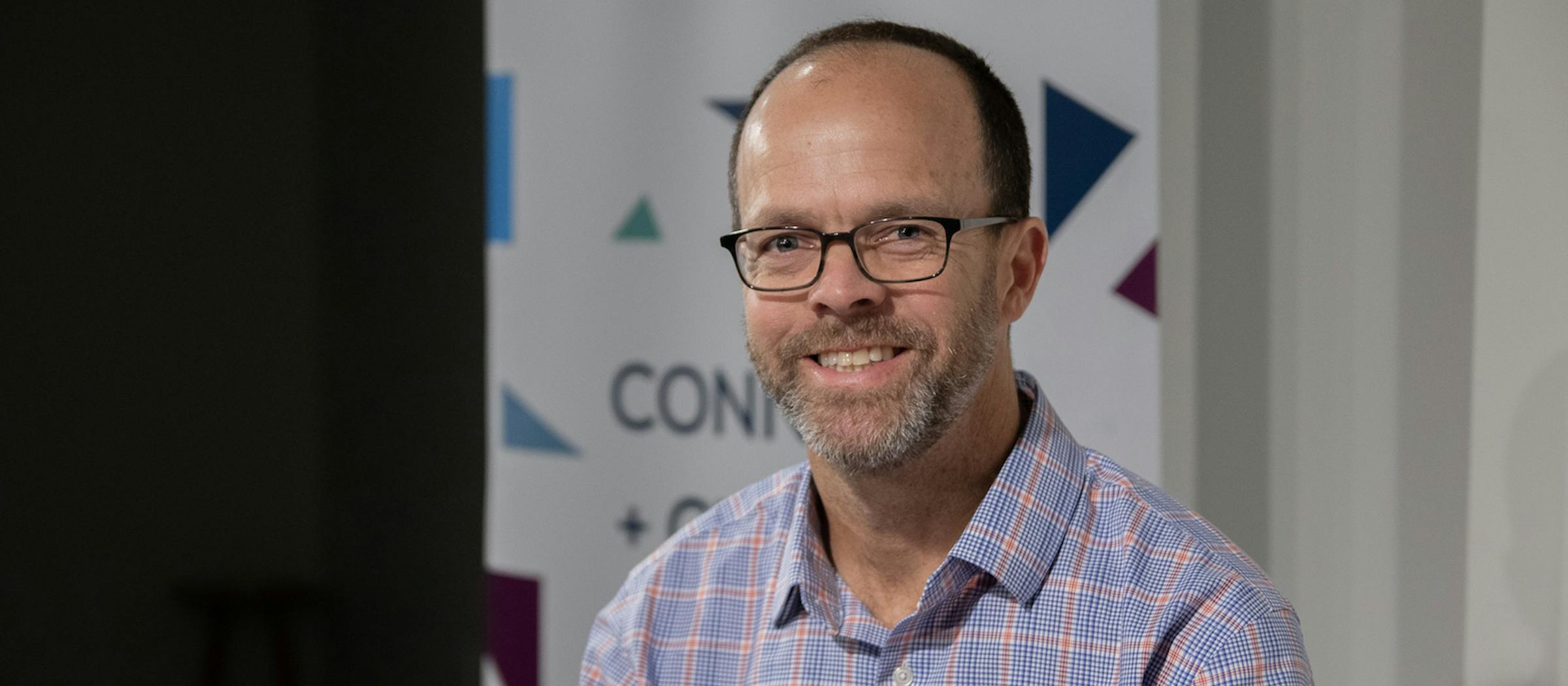Digital health in the context of life: A conversation with David Van Sickle
Earlier this month, David Van Sickle joined us to share his journey as co-founder and CEO of Propeller Health, a digital health company that is bringing treatment for COPD and asthma into the 21st century.
David’s early career as a medical anthropologist led him to realize the need for better management of chronic respiratory disease — and how digitally powered therapy can step in to close the gaps at both the individual and community levels.
Watch the full conversation with David here.
After Tales from the Trenches, we followed up with David to talk more about his experience as an entrepreneur, anthropologist and leader.
As an anthropologist by training, which skills and experiences have translated well and helped you be a successful startup founder and CEO?
Anthropologists are trained to make sense of things in context. We learn to root out the complex but practical rationales underlying behavior and we try to figure out how those emerge and change. We also learn to prioritize and pursue first-hand knowledge and experience, to become deeply familiar with the ins and outs of daily life. Little did I know that anthropology would become such an important instrument in my winding career in digital health. As a founder, it benefits you to be drawn close to a problem, and then to pursue solutions rooted in that experience and in what you can imagine being possible.
During the conversation, you mentioned how founding Propeller meant “being a novice all over again.” How do you balance becoming an expert in your field while also allowing yourself opportunities to be a beginner?
Each major step in my career has required me to accept becoming a novice again. While gradually accumulating depth and experience in respiratory disease, I was always attracted to opportunities to create more direct connections to the world.
I was also puzzled by how often I saw experts create imaginary obstacles to potential solutions. Contrary to my background in anthropology, I’ve never been one to assume that, to solve a problem, one needs to know its causes. In fact, I’ve never learned more than when actively testing interventions. Instead, I look for moments and opportunities with less certainty, try to approach them with more tolerance, and then quickly build better, forward-propelling arguments.
You shared the concept of digitally guided therapy. What is digitally guided therapy and what do you expect it to look like ten years from now?
Digitally guided therapy uses information from connected medicines to help optimize care and treatment for a disease. It takes into account emerging data about response to treatment — what is working for an individual and what has worked for others like them — and uses a variety of signals to assess an individual’s impairment and risk. And it helps physicians do the important work of setting the goals and direction of treatment, while machines help the patient reach that objective as quickly and safely as possible through ongoing adjustments. In asthma, [ongoing adjustments] means changing the dose of medications and the components of a regimen until treatment is achieving its goal: truly controlling symptoms and allowing people to participate fully in the activities they choose.
In addition, digital medicines have the power to gather population-level feedback on how communities experience disease and apply those proactively to an individual. For example, as we see a population begin to experience an outbreak of viral disease, we can suggest behavioral and medication adjustments that help protect individuals from exacerbations.
In ten years, I expect that digitally guided therapy will be much further ingrained in the experience of healthcare. People have come to expect a digital component in other aspects of life; you don’t think twice when your banking app alerts you that you’re about to go over a spending limit, or when your fitness tracker tells you it’s time to stand up and walk around the block. I hope that ten years from now, we expect our medicines to deliver insights that help us understand and treat disease.
Propeller has partnered with a number of other organizations, from government institutions to big companies. What’s the key to a successful partnership?
Digital health companies are by definition generally trying to create more value than they capture. That is true in developing products that meaningfully improve the day-to-day lives of patients, in helping organizations lower the costs of care and in guiding partnerships with big companies. In these relationships — but especially in business development pairings — we try to routinely step back and think about our business as an embodiment of bigger shifts in the experience of healthcare.
Propeller has a “creator-driven culture.” What practical advice do you have for entrepreneurs (and “intrapreneurs”) who would like to instill a similar mindset in their company culture?
The history of Propeller is a story about creating a company that has people with respiratory disease at its heart and focuses on solving problems for them and the people and organizations who take care of them.
Within that, we make room for people with all sorts of different ambitions. It’s a place for people who are passionate about health, passionate about technology and passionate about inventing the future — all of whom are disciplined and experienced and have a track record of getting things done.
We want to create a culture and a company that no one else can build, full of people who like to get close to problems. That means being comfortable with uncertainty, and being guided by what is imminently practical without ever compromising the mission. Most important, it means working with people who are motivated to get better at their jobs every day.
During the event, you mentioned that you were worried in the early days of digital health that this technology was going to be something that mostly helped people who could afford it. What steps have you taken to ensure equitable access to your technology and what advice do you have for other entrepreneurs who would like to do the same?
We are focused on making a digital medicine that is accessible, personal, powerful and convenient for every asthma or COPD patient that wants to use it.
This focus comes to life in several ways. First, we work to make sure that Propeller is not a financial burden to the patient. We aim to make Propeller widely available through partnerships with pharmaceutical companies, payers and healthcare systems, all of whom are incentivized to invest in technology that drives adherence, lower cost of care and improves health outcomes. Second, we have made it a priority to translate Propeller into other languages and to ensure that the descriptions we use in the app are easy to read and understand.
On a population level, we are always looking for ways that organizations can use the information in Propeller to make entire communities healthier, by focusing on population-level interventions that improve local contexts.
Want hear from more innovators like David? Join us for our next Tales from the Trenches with Intersect ENT CEO Lisa Earnhardt on Wednesday, December 5.



